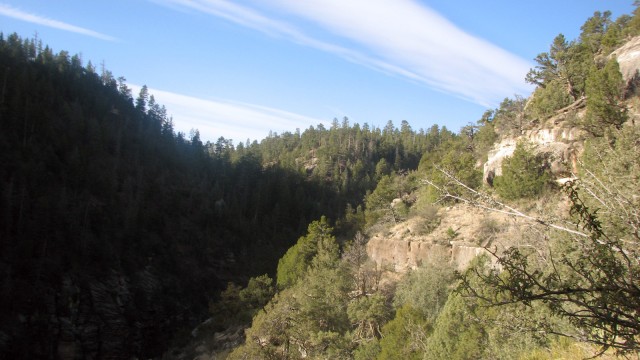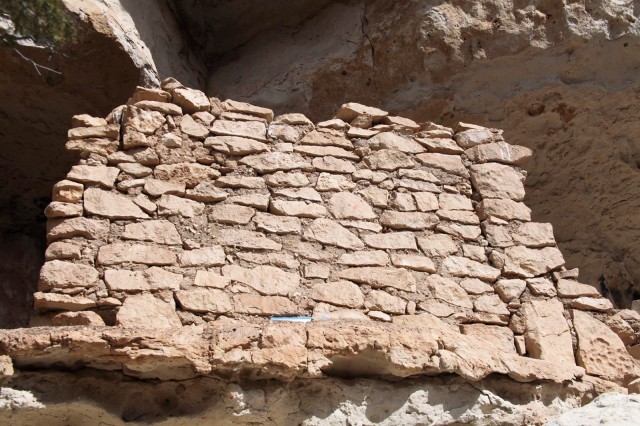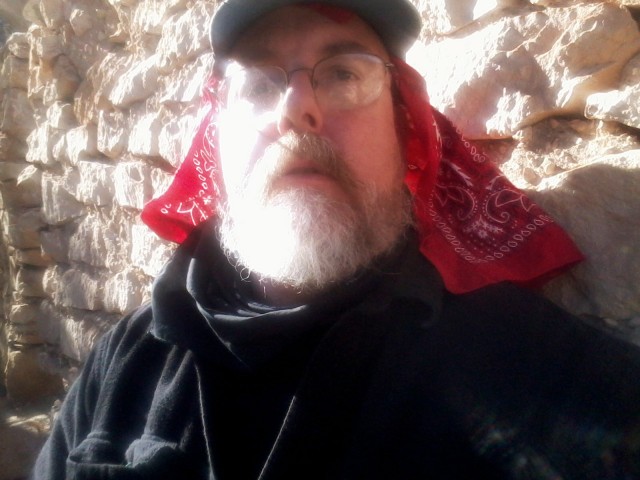- Home
- >
- Preservation Archaeology Blog
- >
- Archaeological Documentation on a Slippery Slope, ...

Recently, I was fortunate to assist my colleague Doug Gann with a project at Walnut Canyon National Monument, near Flagstaff, Arizona. The work took place at two small cliff dwellings about halfway down a very steep ravine above Walnut Creek. The project is through an agreement with the Colorado Plateau Cooperative Ecosystem Studies Unit (CPCESU). (Learn more about CESUs here.)

These sites have three rooms and two rooms, respectively. One of the rooms has tall standing walls, but the other four rooms have been ravished by time and weather, as well as animal and human impacts. My part of the project involved taking thousands of photographs that Doug will use to generate 3D models of the two sites. Erin Gearty, archaeologist with Walnut Canyon, accompanied me, and she completed the exhaustive architectural documentation necessary for the two sites. The sites are associated with the Sinagua branch of ancient Pueblo culture.
These habitation sites lie at some distance from one another, and they are contemporaneous, which piqued my interest. Both are located in rock-shelter settings (one 50 feet above the other) about halfway down the slope toward Walnut Creek. A heart-rate spiking scramble is (and was) necessary to access the dwellings—either 150 feet down to (or up from the creek) or 150 feet up to (or down from) the rim.

Although not dated by tree-rings, masonry style and their inaccessible location suggest a date in the mid- to late AD 1200s. All five rooms had blackened, sooted ceilings, indicating that inhabitants lit and tended numerous fires. Thus, the rooms were apparently used for living, and not just storage of food or other items.
So, the obvious question occurred to me—what drew the Pueblo builders to this isolated location? Much of the surrounding Sinagua population was clustered in several residential communities located at some distance from these sites. These folks, in contrast, chose to build in an isolated portion of the canyon. Their daily lives required a hike up or down to access water, agricultural fields, and most other resources.
Given the time period—the late Pueblo III period—perhaps fear of conflict caused the use of such a challenging habitation locale. Many sites built during this period reflect a growing awareness of the potential for conflict and preference for defensible, isolated locations. On the other hand, maybe this group desired separation from other Sinagua groups in the area. Perhaps they were newcomers to the area, immigrants who had few other choices for building their new homes.
We will never know the exact reasons behind the location of these dwellings. Nevertheless, the detailed work we completed contributes to the preservation of data for such at-risk sites. Each site contributes unique data to our understanding of the broad patterns of human settlement on the Colorado Plateau.
Doug will contribute part 2 of this story in May, after he has processed the photogrammetric data.

2 thoughts on “Archaeological Documentation on a Slippery Slope, Part 1”
Comments are closed.
Explore the News
Related to This
-
Location Walnut Canyon National Monumen...
How did the Sinagua climb up to their dwellings and down to the creek? When my wife and I were there a few years ago we (in our late fifties) could not have made the trek.
Mr. Conde:
Thanks for your interest. Yes, you are correct. For us, accessing these wonderful dwellings is a challenge! Because this was part of daily life for members of the family, I suspect they gave it little thought; no more than we think much about driving our cars to the store. As the landscape has evolved significantly in the more than 700 years since the sites were used, there is no evidence of trails near these cliff dwellings. Nonetheless, there is little doubt that ancient folks climbed up and down, to and from their houses, via trails.